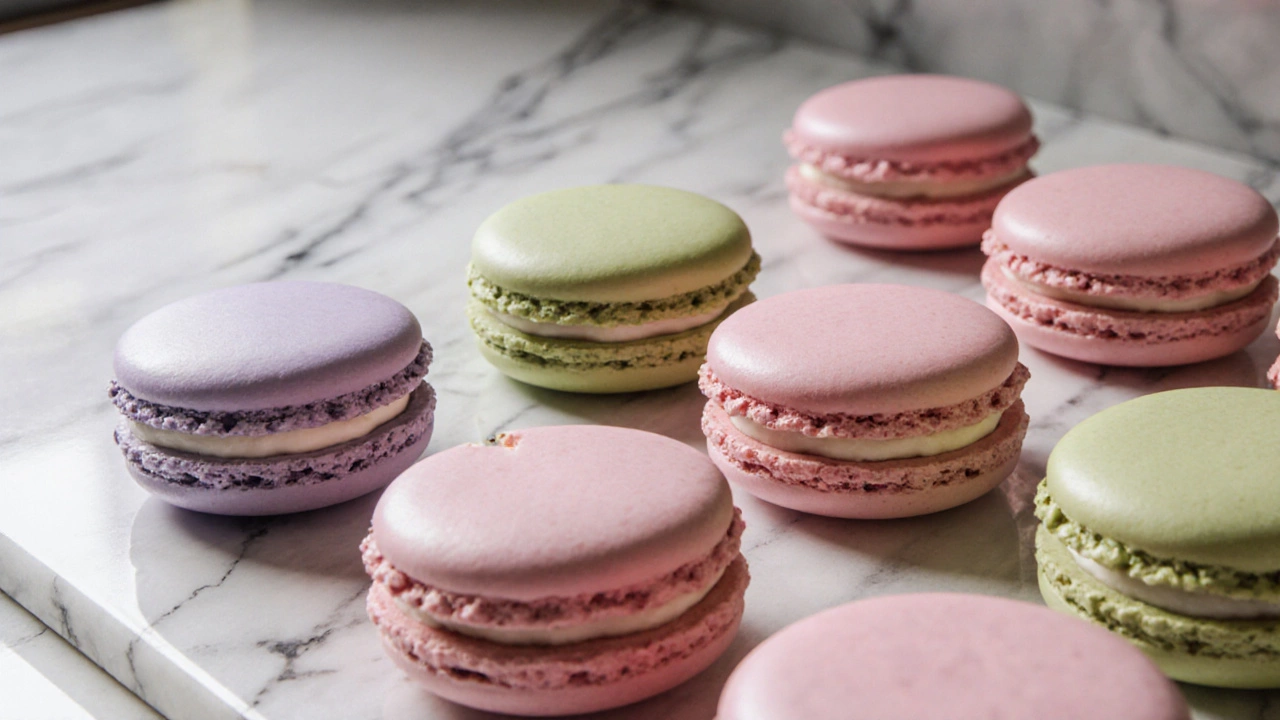
Macaron Type Finder
What Type of Macaron Is This?
Answer these 4 questions to identify the macaron type based on key characteristics from the article.
Ever wondered why those tiny, glossy cookies are called macarons meaning? The name pops up on Instagram feeds, in upscale cafes, and even at home bake‑offs, yet many people still can’t pin down what a macaron really is. Below you’ll get a clear, down‑to‑earth rundown-what they are, where they come from, how to tell them apart from look‑alikes, and a quick cheat‑sheet if you want to try baking one yourself.
When you see a delicate, colorful sandwich cookie on a bakery display, you’re probably looking at Macarons-a French confection made from almond flour, powdered sugar, and egg whites, typically filled with buttercream, ganache, or jam. The word “macaron” (pronounced “mah‑kah‑ROHN”) comes from the Italian “maccherone,” meaning “fine dough.”
What Exactly Is a Macaron?
A macaron is a small, round, meringue‑based cookie that consists of two smooth shells joined by a creamy filling. The shells are crisp on the outside, slightly chewy inside, and they rise into a distinctive “foot” around the edge during baking. Unlike the American coconut macaroon, a French macaron contains no coconut and relies on almond flour for its nutty flavor and texture.
The Sweet History Behind the Treat
The story starts in Renaissance Italy. Catherine de’ Medici, who married the future King Henry II of France in 1533, is often credited (though not definitively) with bringing Italian almond‑based pastries to the French court. Early versions were called “maccheroni” or “macaroni” and resembled today’s Italian almond cookies. By the early 18th century, the cake‑maker Pierre Desfontaines of the Saint‑Cyr‑sur‑Loire monastery refined the recipe, adding a French‑style meringue and the characteristic sandwiched filling. The pastry found its way to Parisian patisseries, and the nickname “Paris‑Brest” later emerged for larger, rope‑shaped variations.
Core Ingredients & Why They Matter
- Almond flour: Provides the nutty base and helps the shell hold its shape. Use finely ground, blanched almonds for the smoothest texture.
- Powdered sugar: Sweetens the batter and works with the almond flour to create the glossy finish.
- Egg whites: The meringue component. Fresh, room‑temperature whites whip up best and give the shells that light, airy structure.
- Granulated sugar (optional): Often folded into the meringue to stabilize it and add a tiny crunch.
- Fillings: Buttercream, ganache, fruit purée, curd, or even savory spreads like goat cheese and herbs.
Temperature control is the unsung hero of macaron success. The batter-called “macaronage”-needs to reach a point where it flows like lava but still holds its shape on parchment. Over‑mixing leads to flat, cracked shells; under‑mixing results in a doughy center.
French vs. Italian Macarons vs. Macaroons
Even seasoned bakers mix these up, so here’s a quick side‑by‑side look.
| Aspect | French Macaron | Italian Macaron | Coconut Macaroon |
|---|---|---|---|
| Main Base | Almond flour + powdered sugar + meringue | Almond paste + sugar + egg whites (no almond flour) | Shredded coconut + sugar + egg whites |
| Texture | Crisp shell, chewy interior, smooth “foot” | Dense, slightly crumbly, no foot | Chewy, moist, no distinct shell |
| Typical Fillings | Buttercream, ganache, jam, curd | Often unfilled; sometimes dusted with powdered sugar | Usually plain or dipped in chocolate |
| Origin | France (18th century) | Italy (Renaissance period) | United States (mid‑20th century) |
Flavor Trends That Keep It Fresh
Classic French bakeries still churn out vanilla, pistachio, and raspberry, but the modern macaron scene loves to experiment. 2024 saw a rise in savory‑sweet hybrids like miso‑caramel, rosemary‑lemon, and even kimchi‑cheese. Seasonal fruits-blood orange, mango, and blackcurrant-appear in spring menus, while holiday collections bring peppermint, eggnog, and cranberry‑cranberry.
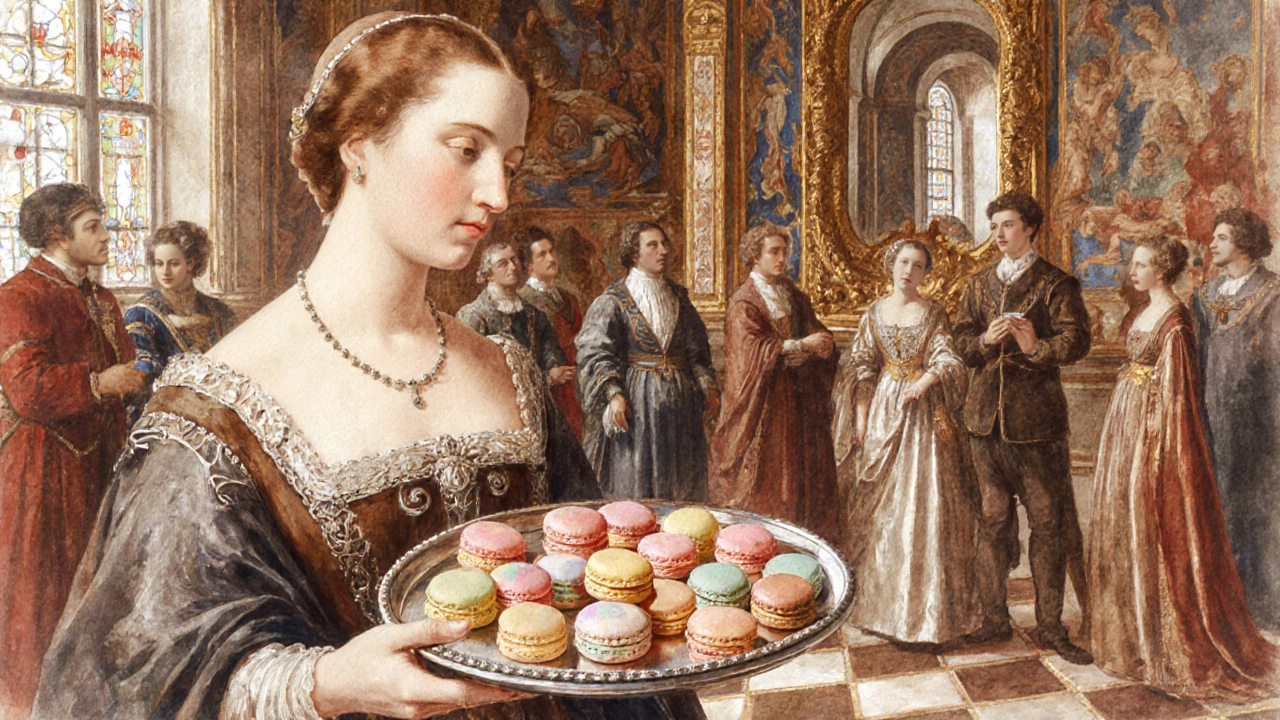
How to Tell if You’re Looking at a Real Macaron
- Check the size: authentic macarons are about 1.5 inches across.
- Look for the “foot”: a raised, ruffled edge that’s visible after they’ve cooled.
- Feel the texture: the shell should snap lightly when pressed, while the interior is soft, not mushy.
- Note the color uniformity: a good macaron has an even hue on both shells, indicating proper resting and baking.
If any of these clues are missing, you might be staring at a cookie that’s merely inspired by the macaron, not a true French macaron.
Quick Home‑Baking Checklist
- Weigh all ingredients (grams, not cups).
- Sift almond flour and powdered sugar together twice.
- Separate egg whites from yolks; let whites reach room temperature.
- Whip a French meringue (soft peaks) and gradually add granulated sugar.
- Fold the dry mixture into the meringue until the batter forms a thick ribbon that slides off the spatula.
- Pipe 1‑inch circles onto parchment; rest 30‑60 minutes until a skin forms.
- Bake at 150 °C (300 °F) for 14‑16 minutes; let cool completely before adding filling.
Even if your first batch looks cracked, treat it as practice. The variables-humidity, oven calibration, and even the brand of almond flour-can shift the outcome dramatically.
Where to Find the Best Macarons (If You’re Not Baking)
Paris remains the gold standard, with Ladurée and Pierre Hermé setting the benchmark for flavor depth and shell perfection. In the Southern Hemisphere, Auckland’s Macaron Mania and Melbourne’s Petite Patisserie source local almonds and offer seasonal twists. For a budget‑friendly option, most grocery‑store bakery sections now carry pre‑made shells that you can fill with your favorite jam.
What does the word “macaron” literally mean?
The term comes from the Italian “maccherone,” which originally meant “fine dough” or “paste.” Over time it evolved in French to refer specifically to the almond‑based sandwich cookie we know today.
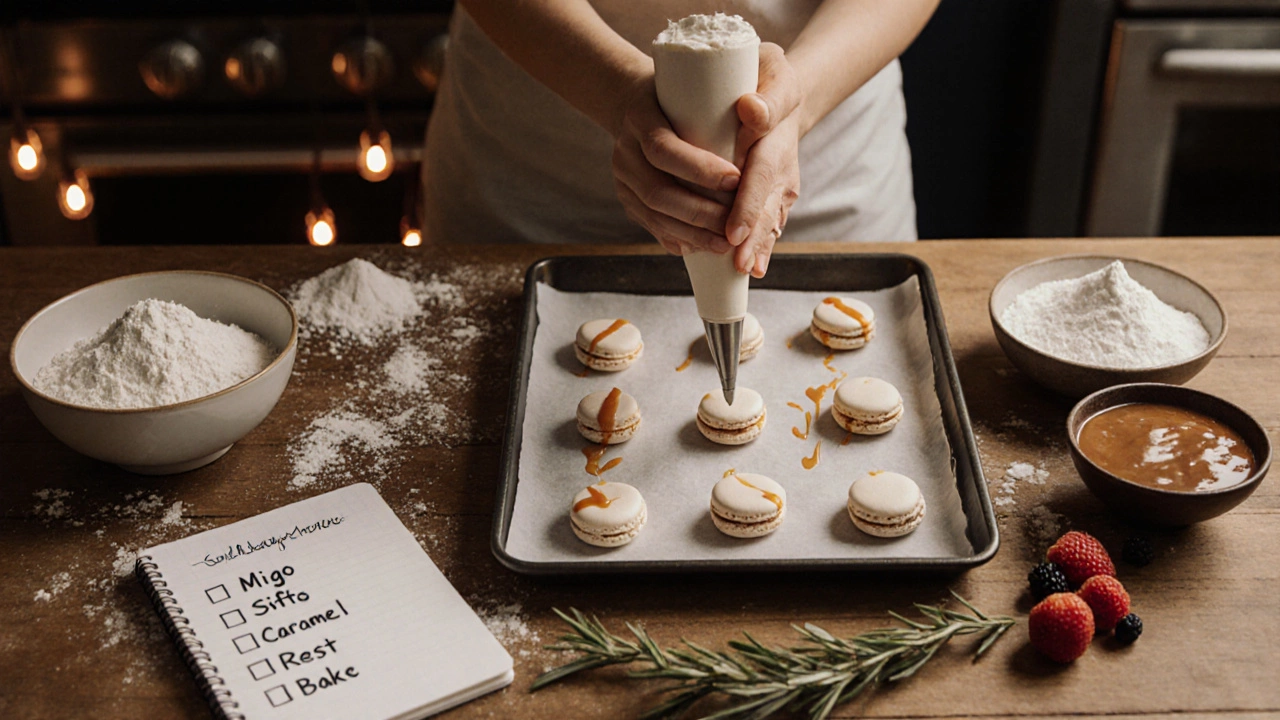
Are French macarons the same as macaroons?
No. French macarons are made with almond flour and have a crisp‑chewy shell, while macaroons are coconut‑based, dense, and don’t have a filling.
Can I make macarons without an oven?
Traditional recipes require baking to set the shell, but there are no‑bake variations that use gelatin or agar‑based fillings and a fridge‑set shell made from ground almonds and sugar. The texture will be different, though.
Why do some macarons have a cracked top?
Cracks usually mean the batter was over‑mixed or the oven temperature was too high. Adjust the macaronage step and double‑check your oven’s calibration.
How long do homemade macarons keep?
Stored in an airtight container in the fridge, they stay fresh for up to a week. For the best texture, let them come to room temperature about 20 minutes before serving.


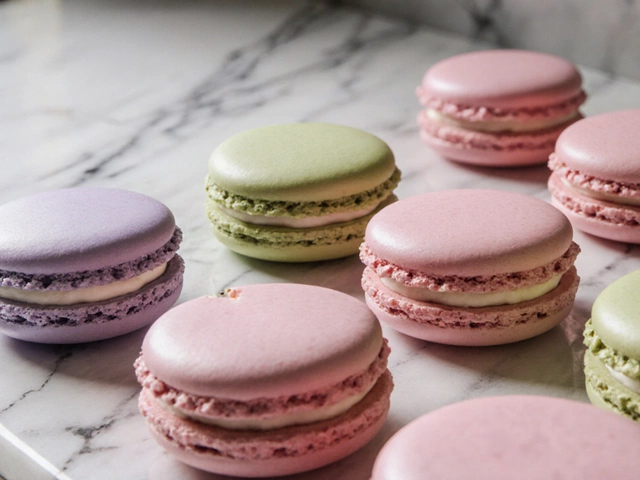
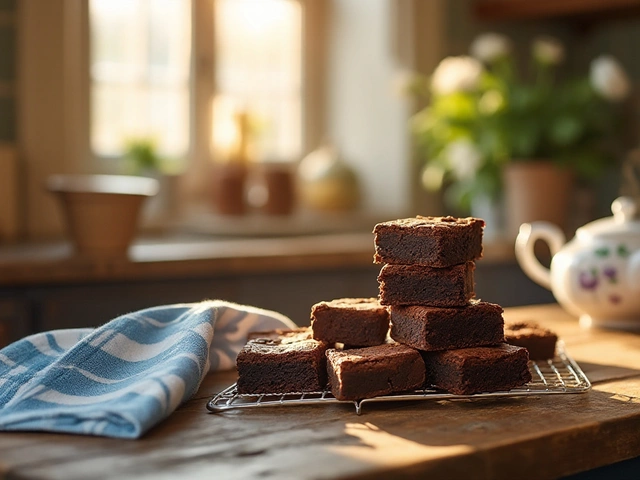
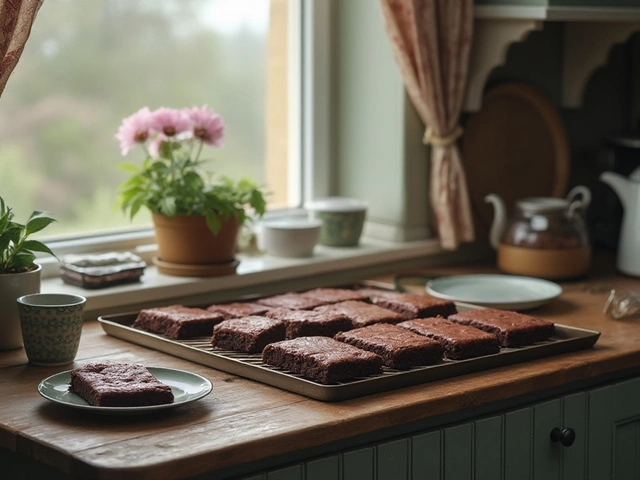
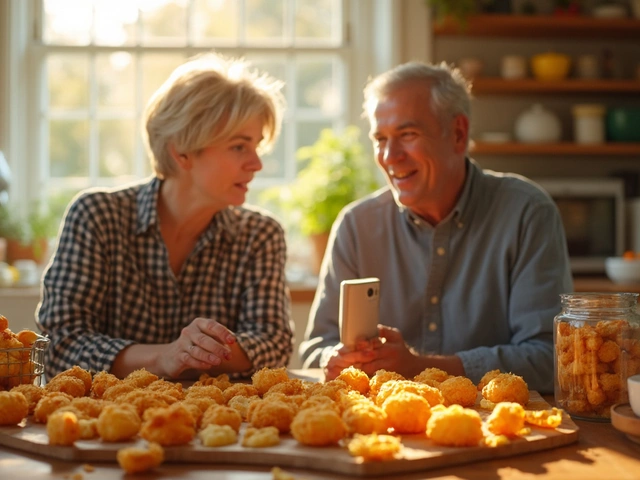
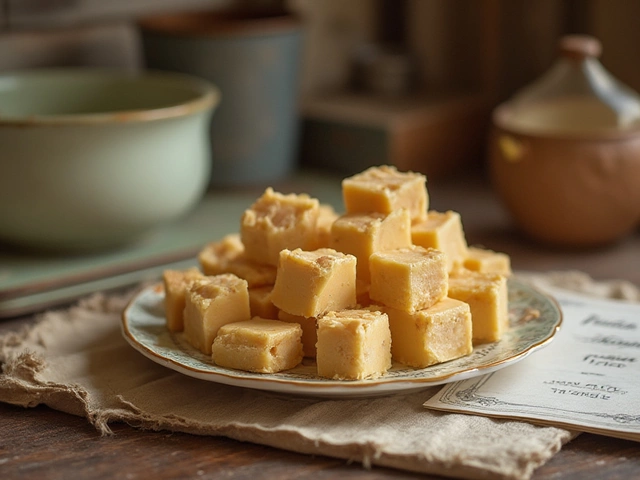
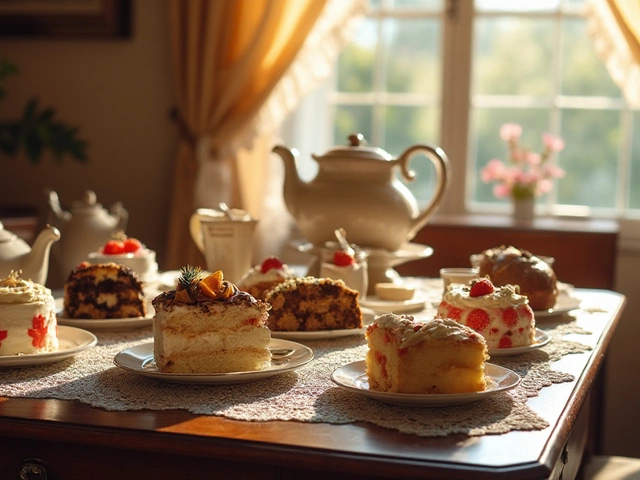
Write a comment